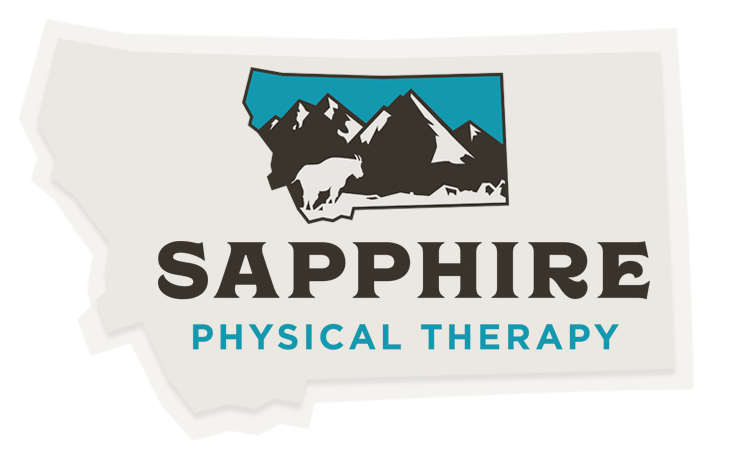Fall Ski Specific Training to Reduce Injury Risk and Increase Enjoyment
The forecast for the Northern Rockies calls for a cold and snowy winter which is good news for Montanans. Winter enthusiasts in the US include 13 million downhill skiers and snowboarders, 1 million backcountry skiers (wildsnow.com), and 5 cross country skiers (statista.com). With snow in the high country and the first arctic storm hitting Montana, now is the time to get serious about a fall ski specific training program. This year presents unusual challenges as many of us have limited access to gyms and classes due to Covid-19 pandemic precautions. I will attempt to provide useful and functional exercises specific to skiing (and snowboarding), while identifying important exercises unique to each ski discipline. In future posts on our website (www.sapphirephysicaltherapy.com) and social media, I will highlight each exercise in more detail.
An average of 51 million ski and snowboard visits were recorded at US ski resorts over the last five years (nsas.org). In the midst of the current Covid-19 pandemic, it should be noted that cross country and backcountry ski days are not included in the ski resort statistic. In the US, 600,000 ski and snowboard injuries occur annually (nsaa.org). While many injuries are the result of experience level, snow conditions, hazards, and equipment failure, injury risk can be greatly reduced by proper off season and pre season training. Understanding the unique demands of skiing and preparing for them before heading to the mountains will improve your safety while enjoying time on the snow.
Cardiovascular Conditioning
Skiing and snowboarding places higher impact and torsional forces through the body than most sports. Cycling, running, hiking, and backpacking are excellent off season conditioning activities, but even a fit summer athlete should add skiing specific training to prepare for a winter of fun. Hiking and bounding with poles is an excellent way to prepare for backcountry skiing and cross country skiing. Getting on your feet, moving your legs quickly uphill with the aid of poles translates will to skiing. A strong cardiovascular base is important for downhill skiers and snowboarders as well for those long traverses and end of the day runs to reduce fatigue.
Strength
Skiing is a whole body sport. The quadriceps are the muscles we often feel burning to the point of agony the first few days on skis. However, one reason our quadriceps burn in the early season is because our hamstrings, hip, gluteal, and core muscles are not sufficiently strong. Loading each muscle group with weight is crucial. Performing body weight resistance exercises only will get you strong to a point, but you will soon plateau. Remember, gravity is constant, and skiing and snowboarding magnify the gravitational force when turning, jumping, and landing. Body weight exercise prepares us for only a fraction of the force mitigation required for a successful and fun winter season. Squats, single leg squats, Romanian dead lifts, lunges, lateral lunges, knee extension, Nordic hamstring curls, box step ups-step downs are examples of good strengthening exercises. Upper body exercises should not be forgotten. If backcountry or cross country skiing are your sports, then your shoulders need to be strong and have the endurance to pole for hours. Pull ups, push ups, rows, latissimus dorsi shoulder extension (poling motion), and flys are exercises for backcountry and cross country skiers. Core strength is important to reduce back, hip, and shoulder pain and injuries. Various planks, rotation exercises, push ups, Swiss ball exercises and TRX exercises are effective core strengthening tools.
Power
Power deserves a separate heading. Power training involves exercises which generate large amounts of force. Turning in heavy snow, jump turning down a narrow couloir, hopping over an early season obstacle, and accelerating off the start line in a race are examples of when power meets the snow. Plyometric exercises
involve power generation as well as efficient absorption of impact or loading over and over to develop a power reserve which makes a good ski day great. Lateral hops, grid hops, single leg hop ups, box cross overs, and box jumps are examples of a few plyometric options. A weight vest, weighted backpack, or kettlebell resistance will further build power.
Agility
Feeling confident and at home on varying terrain and snow conditions takes experience, skill, and agility. Agility goes beyond just having good balance. Agility allows one to hold an edge, recover from a loss of balance, navigate an icy turn on wafer thin skate skis, and navigate early season obstacles. Balance pads, slack lines, single leg hopping drills, and foot intrinsic exercises develop agility and balance. A properly qualified physical therapist or personal trainer can create a fall workout routine to address the musculature involved in your winter sport.
Adjust training to your winter sport
If you are a ski mountaineer (skimo) racer, then you need to do interval training with fast turnover to simulate skinning uphill. Cross country and skimo racers should also practice anaerobic bursts on land (before snow is available) to simulate race starts. These ski disciplines also involve a disproportionate amount of upper body strength, so an effective fall training routine should reflect your sport. If you are a recreational skier who wants to have a good time and stay safe, a sound fall ski training routine will address the above aspects but at a less demanding level. The physical therapy staff at Sapphire PT understands winter sports and we can help you achieve your winter goals through individualized exercise routines. We also offer a morning and evening exercise class designed around the demands of skiing, snowboarding, and running. Watch for some of the above exercises highlighted on our website and social media in the coming weeks.
Written by John Fiore, PT





